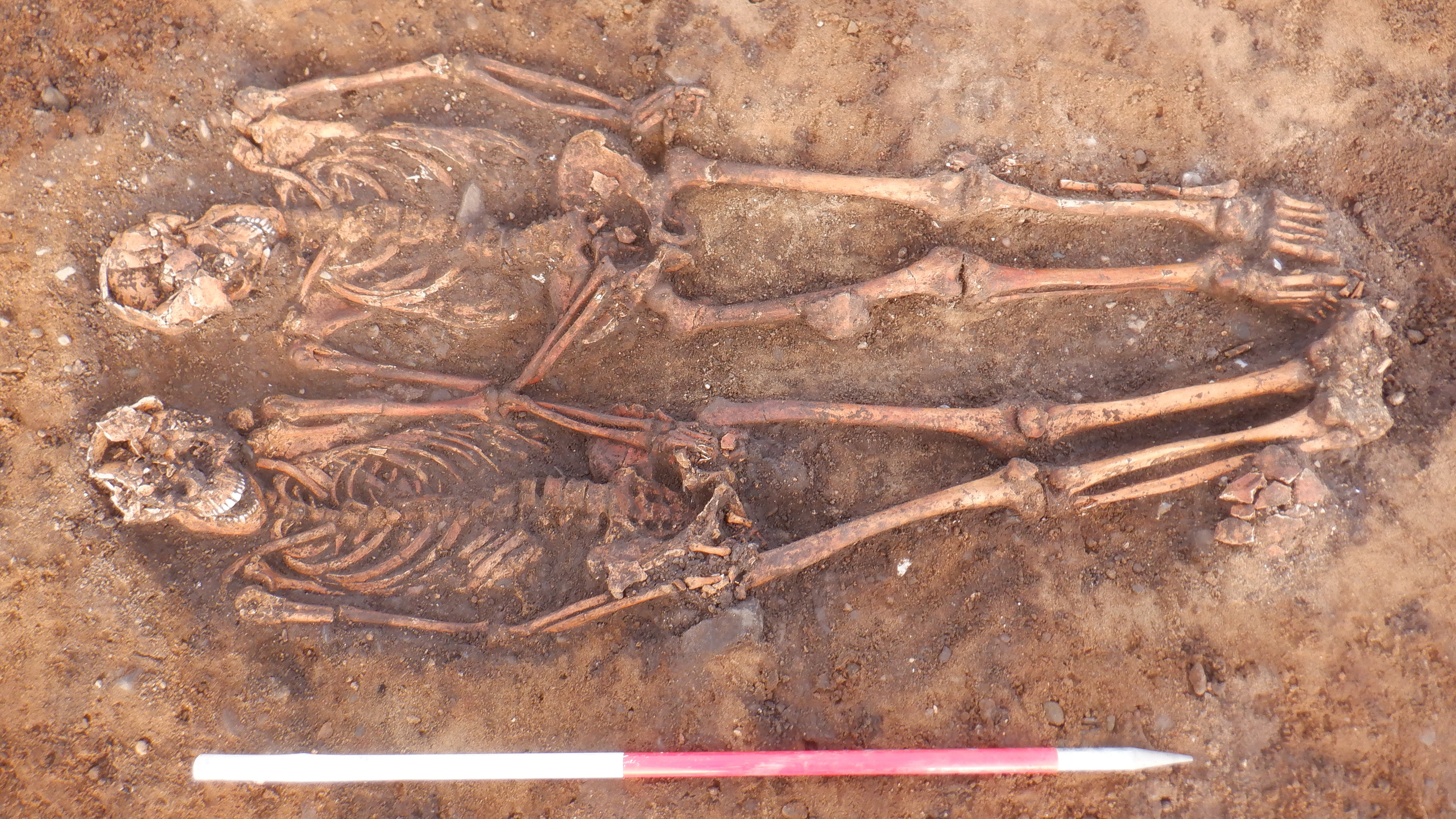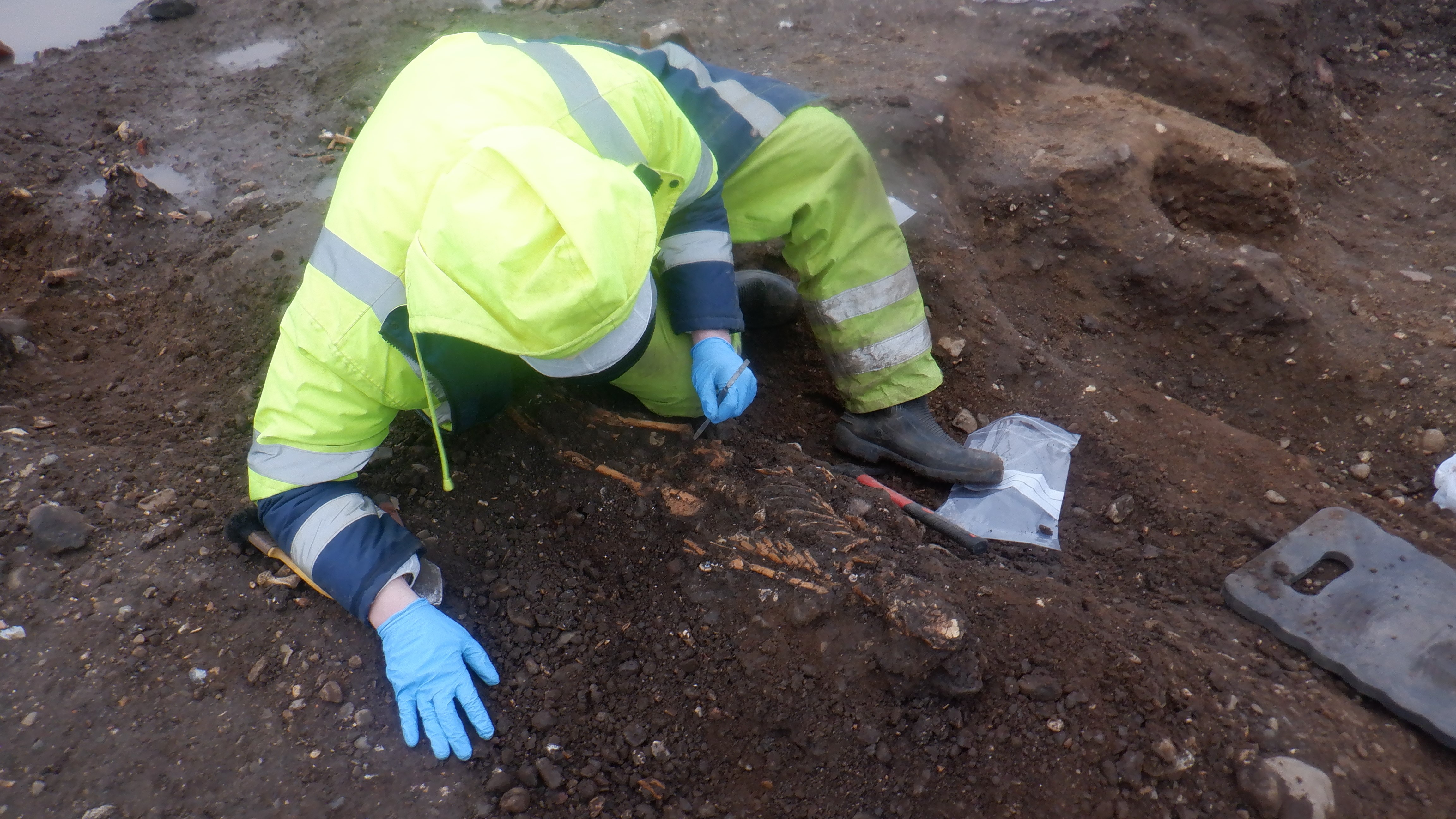
Archaeologists have unearthed the bones of 146 people in the graveyard of a now-demolished medieval abbey in Northern Ireland. While most of these people received full Christian burials, a handful of graves may belong to executed criminals who were denied this treatment.
The graves mostly contained the remains of men, as well as a small number of skeletons belonging to women and children, archaeologists told the BBC. Researchers think the find dates to the 14th or 15th century, but further analysis is needed to confirm this.
The vast majority of the burials were orientated west to east, following the medieval Christian belief that — in the words of the late 14th century and early 15th century English priest John Mirk in "Festial" — the deceased would be "readier to see Christ coming out of the east at the Doom" in this position.
Some later graves in the newly discovered graveyard faced north to south, however, possibly as a form of punishment for their occupants.
"Generally speaking, medieval Christians were very careful to provide an west-east burial and to ensure that all Christian rites were observed in order to support the deceased individual in their journey through purgatory," Roberta Gilchrist, a professor of medieval archaeology at the University of Reading in the U.K. who was not involved in the discovery, told Live Science in an email.
Related: 1,000 burials and medieval village found in excavation of abbey destroyed in French Revolution
In some cases, however, burial rites were skipped. Plague cemeteries and mass burials dating to the Middle Ages indicate that during some large mortality events, less care was taken to give people full Christian burials, Gilchrist said.

Other people were denied full Christian burials because they were deemed guilty of criminal misconduct. Archaeologists identify these individuals "on the basis that they were treated differently by being buried prone (face down) rather than in a different orientation," Gilchrist said. "A prone burial [or] atypical burial is generally interpreted as having been intended to convey disrespect, punishment or humiliation of the dead. Burial in a north-south position may have been similarly regarded as signaling stigma and lack of respect for the deceased."
Although the north to south graves may have belonged to criminals, these people were nevertheless buried in a consecrated cemetery, Gilchrist said. "The ultimate sanction would have been to bury them in unconsecrated ground, which in the medieval Christian cultural context is to treat the dead as a non-person (with no possibility of salvation)," she said.

Archaeologists unearthed the cemetery at the end of 2023, ahead of construction work in the town of Carrickfergus, in County Antrim. The burial ground belonged to Woodburn Abbey, a 14th-century place of worship for people of the Premonstratensian, a Roman Catholic religious order.
Woodburn Abbey was dissolved in 1542, when the abbot and community retired to a nearby town, and the building was gradually demolished from about 1558, the BBC reported. Any ruins have yet to be found.
Archaeologists await the results of a post-excavation report, which they hope will reveal more information about the people buried in the newly discovered cemetery.
"That will tell us the age of the individuals," Chris Long, an archaeologist with Gahan and Long Archaeological Services who led the excavation work, told the BBC. "We can identify diseases that they may have had, we will be getting radiocarbon dates for them, and we might be able to do other analyses that may tell us the individuals' ethnic origin as well."
The remains will then be reburied at a location that remains to be determined, according to the BBC.







